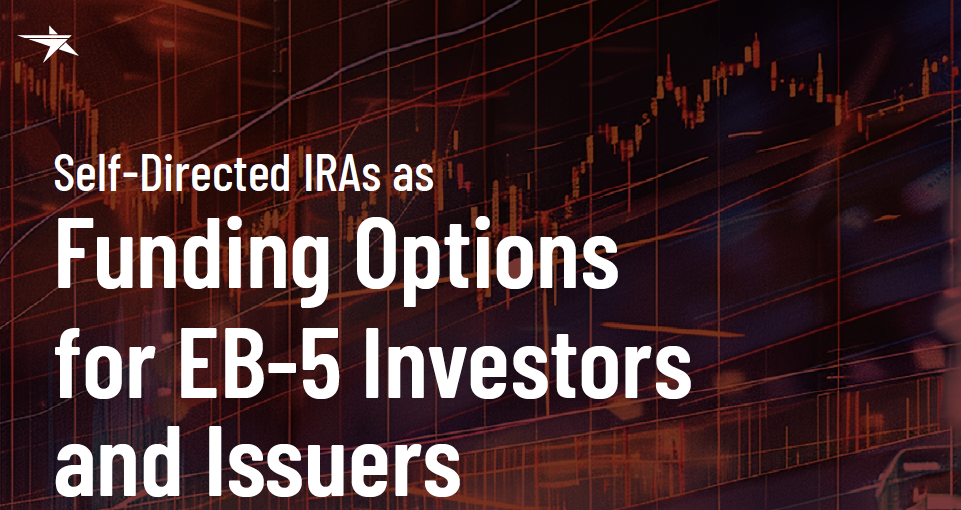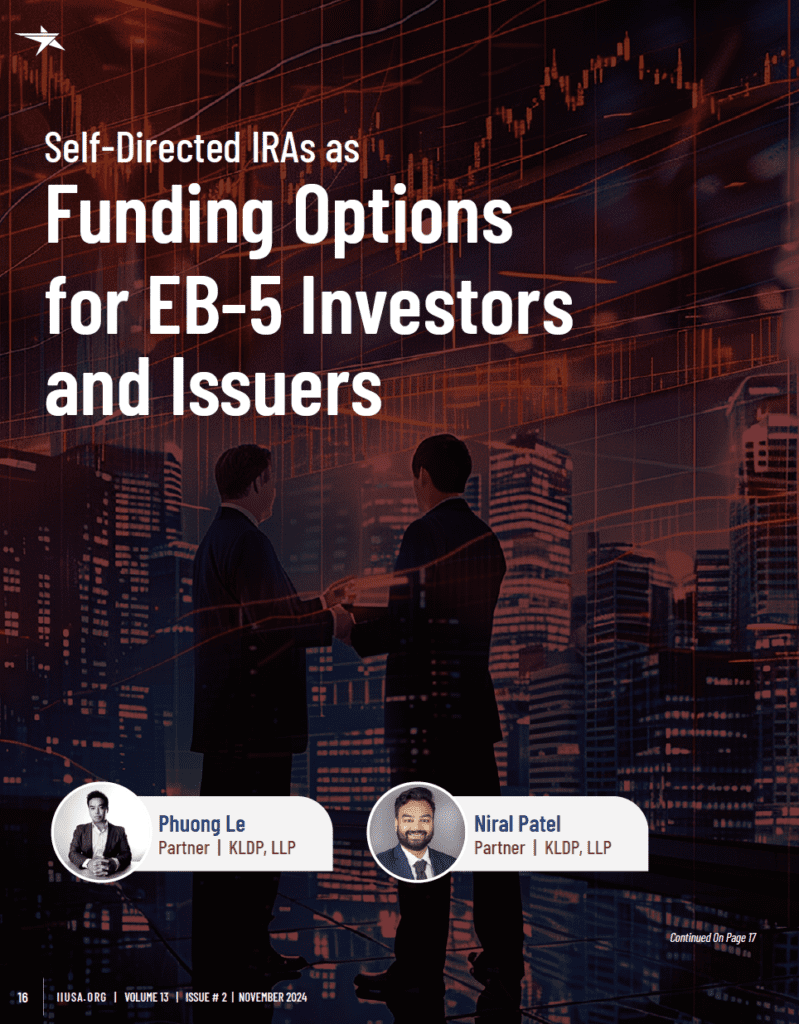RCBJ Perspectives: Self-Directed IRAs as Funding Options for EB-5 Investors and Issuers
By: Phuong Le | Partner, KLDP LLP and Niral Patel | Partner, KLDP LLP
This article originally appeared in the November 2024 edition of IIUSA’s Regional Center Business Journal.
Introduction
Once upon a time, structuring an EB-5 investor’s source of funds was simple. Throughout most of the program’s history, the majority of source of funds were based on secured loans, a sale of property, or income.
Unfortunately, it is no longer that simple. We are at a crossroads in the EB-5 program where there’s a juxtaposition of an increased minimum investment amount, tied up assets, staggered liquidity, and tax issues. Not to mention, we still have to make sure the EB-5 program achieves the investor’s desired immigration goals.
Recently, a new option has emerged – Self-Directed IRA accounts (“SDIRAs”). SDIRAs are a powerful funding option for many investors, both as a pool of lawful funds and for certain tax advantages. For investors and issuers alike, it’s important for them to understand the nuances of pursuing and accepting SDIRAs because it may be the difference between an investor electing to subscribe or not.
Below we explore why SDIRAs have become an increasingly popular and viable option, the mechanics behind using them, and some issues to consider when implementing a plan to accept them.
What is an SDIRA?
SDIRAs are similar to other retirement accounts such as a traditional IRAs, Roth IRAs, or a 401K plan. They are funded with the investor’s income and the funds can grow with certain tax advantage. The biggest difference, however, is the amount of freedom and control over the menu of investment options in each account.
In a traditional retirement account, a custodian or broker typically decides what menu of investment options are accessible to an investor. That menu may be limited to a few mutual funds or target-date funds (such as your typical 401K provider), or it may be much wider and include publicly-traded stocks, bonds, and ETFs (such as an IRA account through Charles Schwab).
However, an investor generally cannot use these accounts to invest into an EB-5 offering since they are private placements and are not public securities. The reason why funds in an SDIRA can be used to invest into an EB-5 offering is because now the investor decides the menu of investment options available to them (rather than the broker, for example). This allows investors to invest within a larger universe of options, including precious coins, artwork, collectibles, and yes, EB-5 private placement offerings. Thus, by rolling over eligible funds into an SDIRA, an investor is in complete control and able to use SDIRA funds to invest into an EB-5 offering.
Of course, while an SDIRA is now a viable option, it may not be appropriate for every investor. There are costs and fees to set up and manage SDIRAs and investors can incur penalties if funds are not properly invested or managed. Investors are advised to consult with an appropriate financial or tax advisor if they are interested in this option.
CONTINUE READING











